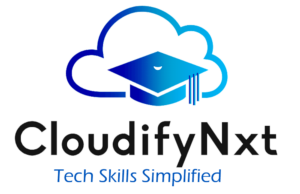
Salesforce Scenario Based Interview Questions
- How would you configure Salesforce to send notifications to related Accounts whenever a Contact’s email is updated?
- Describe how to create a validation rule that prevents a Case from being closed if its Priority is set to Low and Type is Critical.
- What steps would you take to export data from Salesforce and then import it into a different Salesforce instance?
- Explain how to set up record visibility so that Sales Reps can view only their Opportunities, while Sales Managers have access to all Opportunities.
- Outline the process for creating an approval workflow that requires managerial approval if an Opportunity’s amount surpasses $500,000.
- How would you design a custom Lightning component to show a summary of recent Opportunities for a user?
- Describe the approach to write an Apex trigger that updates a custom field on the Account object when a related Contact’s email is modified.
- How would you manage errors in a Flow that handles a large number of records?
- What method would you use to create a picklist field that updates its options based on the selection of another field?
- How would you set up different page layouts for various record types within a custom object?
- Explain how to handle the processing of a large data volume using batch processing in Salesforce.
- How would you implement a formula field on the Opportunity object to calculate potential revenue with a given discount percentage?
- What is the process for scheduling an Apex class to perform daily data cleanup tasks at midnight?
- Describe how you would implement a business rule that performs cross-object updates based on multiple conditions.
- How would you automatically update certain fields on a record based on changes in related records?
- Explain how to design a system that triggers different actions depending on a record’s status and other field values.
- How would you create a custom object to track project milestones and establish a relationship with the standard Account object?
- What approach would you take to integrate Salesforce with an external system and maintain real-time data synchronization?
- How would you create a report that displays the number of open Opportunities for each sales rep and their expected close dates?
- Describe how to ensure data consistency across multiple related objects during data import operations.
- What method would you use to automatically assign leads to sales reps based on their geographic territory?
- Explain how to design a custom user interface that allows users to view and edit related records on a single screen.
- How would you set up a notification system to alert users via email when a high-priority Case is assigned to them?
- Describe how to configure a system where records can only be created if specific criteria based on user profiles are met.
- What process would you use to automatically archive records after they have been inactive for a certain period?
- How would you aggregate data from multiple related records and display this summary in a single field?
- Explain the steps to create a workflow that triggers a series of actions when a record is updated based on specific criteria.
- How would you update certain fields on a record based on user input and information from external data sources?
- Describe how to create a solution that allows users to manage and track their tasks and deadlines within Salesforce.
- What approach would you take to ensure that a record’s data remains accurate and consistent across different Salesforce environments (e.g., sandbox and production)?
- How would you set up a custom notification system that triggers when a specific field in a record is updated?
- Describe the process for implementing a feature that tracks changes to a record’s status and triggers different workflows based on the new status.
- How would you design a system to automatically generate and assign tasks to users when certain conditions are met?
- Explain how to configure Salesforce to handle complex business logic that involves multiple related objects.
- How would you create a system to automatically update related records based on changes to a parent record?
- Describe the approach to set up a reporting system that aggregates data from various sources within Salesforce.
- How would you implement a feature to ensure data quality and accuracy across different record types and fields?
- Explain the steps to create an automated approval process that involves multiple levels of review and approval.
- How would you design a solution that allows users to manage and track their performance metrics within Salesforce?
- Describe the method for integrating Salesforce with other systems to ensure seamless data exchange and synchronization.
- How would you set up a process to automatically send notifications to users when a record’s data changes in a specific way?
- Explain how to create a custom dashboard that provides a comprehensive view of key metrics and performance indicators.
- How would you design a system to ensure that records are properly classified and tagged based on their attributes?
- Describe the approach to implement a feature that tracks user interactions and updates records accordingly.
- How would you create a process to handle large volumes of data efficiently while maintaining system performance?
- Explain the steps to set up a data validation process that ensures records meet specific criteria before being saved.
- How would you design a custom solution that allows users to interact with and manage records from external applications?
- Describe the approach to create a reporting system that provides insights into user activity and engagement.
- How would you set up a system to automatically adjust record visibility based on user roles and permissions?
- Explain the steps to create a comprehensive data migration plan that ensures successful transfer of data between Salesforce instances.
